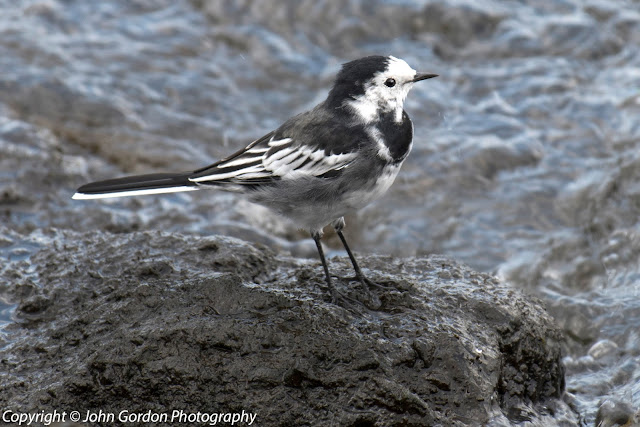Sept 17 2007 Goldcliff Lagoons Newport Wetlands Gwent Wales.
Paul and I had corresponded before I left Vancouver providing him a print-out of my meagre UK life list (134) and unbeknown to me Paul had figured out a plan to find me some lifers. He was even kind enough to pick me up from the village store which is close to the family home. More of why I am in England/Wales later. Soon we were barreling down the motorway to the Newport Wetlands and Goldcliff Lagoons, a well known birding hotspot.
Barely a scrape in the ground, Goldcliff's proximity to the Severn Estuary makes it a magnet for migrating shorebirds while the surrounding farmland attracts a myriad of species including various species of ducks, Meadow and Tree Pipits and Northern Lapwings. The hedgerows harbour migrating warblers like the Chiffchaff and Eurasian Goldfinch. The area is also a staging area for many species preparing to fly across the Bristol Channel, the English Channel and on to Europe. Some migrating as far as North and Central Africa.
In no time at all we had Common Redshank and Greenshank, both lifers as well as Northern Lapwing and a flock of Ruff, It was the first opportunity to use my new Hummingbird Scope. The small size is perfect for travel as it fits in a photo vest pocket or small camera bag, with it I was able to view a another lifer, a Little Stint which otherwise would have been out of range with bins.
 |
| Greenshank. |
 |
| (Common) Redshank. |
 |
| Meadow Pipit. |
 |
| (Eurasian) Curlew Numenius arquata. |
 |
| Little Grebe. |
 |
| Ruff These ruff were part of a flock of five. The males are much larger than the females. |
Cardiff Bay
Our second stop was Cardiff Bay. Sluice gates allow seafaring vessels in and out of the bay allowing salt water to mix with the brackish bay water. Inside the bay a good number of Tufted Ducks preened alongside several hundred Black-headed Gulls. A Gray Heron and half a dozen Great Crested Grebes filled out the roster.
 |
| Grey Wagtail |
Walking along the seawall both Gray and Pied Wagtails were hawking insects while dodging the lapping waves.
 |
| Pied/White Wagtail. |
Black Rock Nr Chepstow Gwent Wales.
Black Rock /Portskewett
Black Rock is also a migrant trap as birds funnel along the banks and across the mudflats. In winter Short-eared Owls hunt along the fallow pastureland. On my visit the bushes and shrubs held plenty of chiffchaffs and the odd Goldcrest. The shoreline had a flock of (Eurasian) Curlew probing the mud. A small flock of Redshank also landed within view. I talked to some locals who were quite amazed by the birds in their midst.
 |
| Chiffchaff |
 |
| Chiffchaff I think? |
 |
| Goldcrest. |
Further adventures to follow when time allows.
John Gordon
Langley Cloverdale
BC Canada
John Gordon
Langley Cloverdale
BC Canada





